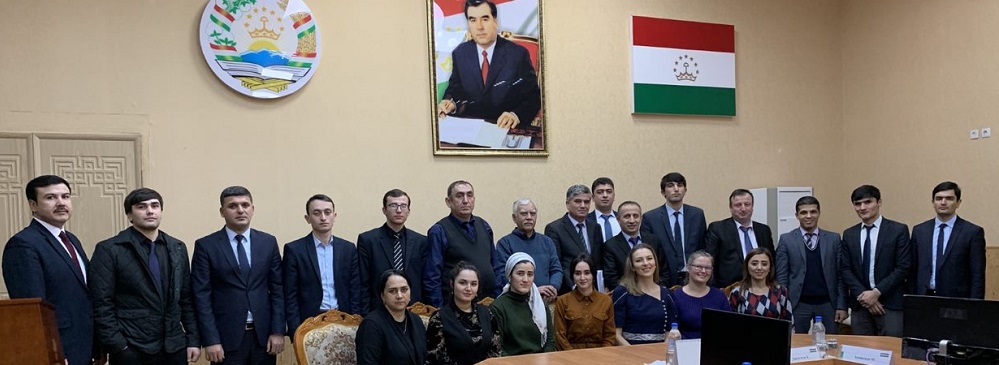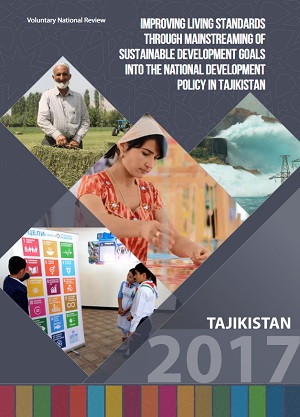Tajikistan
I. General on SDG monitoring set up
National SDG organizational set up
The responsibility for monitoring and evaluation of the SDGs in Tajikistan rests with the Ministry of Economic Development and Trade, while collection of statistical data for this purpose is the responsibility of the Agency on Statistics under the President of Tajikistan (AS).
The National Strategy for Development for the period until 2030 (NSD), which integrates the SDGs, continues to be the country’s main roadmap for development. The NSD, together with its associated first Medium-term
Development Program for 2016-2020 (MTDP), are the main instruments for mainstreaming the SDGs into national development policy.
SDGs have been integrated into the National Strategy for the Development on Statistics (NSDS).National set of SDG indicators
The Government of Tajikistan has been developing a national SDG indicator framework and monitoring system. The UNSD-DFID Project on SDG Monitoring will provide assistance with development of the indicator framework.
SDG reports and Voluntary National Reviews
Tajikistan presented its Voluntary National Review to the UN High Level Political forum in July 2017.
Not available
A platform for the dissemination of SDG indicators will be developed with the assistance of the UNSD-DFID Project. SDMX dataset is available for approximately 30 indicators.
Overall coordination of National Statistical System
An Interagency Committee on statistical coordination was established by the Prime Minister and is led by the Agency on Statistics. Its meetings take place on a quarterly basis at the Minister level. Sub-groups have been established on specific issues or domains, which meet more frequently at the Deputy Minister level.
SDG data coordination committees
An Interagency Working Group has been created with participation of 23 ministries and agencies of the National Statistical System. Global indicators have been grouped, and responsible agencies assigned and contacted, but not everyone responded.
Three data exchange agreements have been put in place between the AS and government agencies, with one already operational with the National Tax Service.
Actual Data sharing arrangements
Data exchange among agencies of the NSS takes place primarily on written request, with response mostly on paper, sometimes accompanied by an Excel file. Most data exchange takes the form of the AS sending data to consumers at the agencies. There are, however, notable exceptions.
Data flows both ways between the AS and Ministry of Health (MoH). The Republican Center on Health Statistics is part of the MoH, and operates DHIS2 (District Health Information System), a WHO-endorsed software system for health administrative data collection and processing. AS has access to DHIS2. Both AS and MoH publish health statistics, with AS focusing on the national level and MoH, on the district level. A web site, medstat.tj, is currently under development.
Similarly, the Ministry of Education has developed in-house an Education Management Information System for education administrative data collection and processing. Aggregates are sent to the AS on an annual basis, in the electronic and paper format, and in turn data required for the calculation of indicators is received from the AS. Data exchange takes places on request.
IV. Data availability and disaggregation
Work to make more indicators available
In 2018, 36 global SDG indicators were assessed as currently available. At the moment, these are not available online.
Metadata for SDG indicators are currently not available. The UNSD-DFID Project will provide assistance on metadata compilation.
UNSD completed the assessment of Tajikistan’s National Statistical System capacity in 2018 as part the UNSD-DFID Project. The assessment focused on the availability of global indicators and reliable data sources. The assessment found that out of the 202 global indicators tentatively assessed as applicable, 87 were found currently available or easily feasible, 101 feasible with a strong effort, and 14 not feasible even with a strong effort.
Tajstat has a draft Communications Strategy that has not been published yet. User engagement is also an important part of its recent National Strategy for Development of Statistics (NSDS) which contains a general plan for implementation too.
UNSD conducted a User Engagement Workshop in Tajikistan on 9-12 December 2019. The workshop brought together approximately 30 participants from the Agency on Statistics and across the National Statistical System. The aim was to add to the existing documents by emphasizing user engagement activities linked to SDG indicators. A separate draft road map for user engagement was developed which will be linked to the Communications Strategy.
Implementation plan and activities
The following activities are planned on user engagement as part of the Implementation Plan:
- Conduct a survey of user needs with regard to monitoring the SDGs.
- Consult key users to discuss their needs in relation to the dissemination of SDG indicators, updating the user engagement strategy.
- Conduct statistical literacy trainings seminars with users.
- Training seminar with representatives of SDG stakeholders (civil society, academia, the private sector, etc.)
- National seminar on progress towards the achievement of the SDGs with ministries, departments, scientific community, civil society, international organizations, and the international experts
- Events on SDGs and their implementation in Tajikistan

